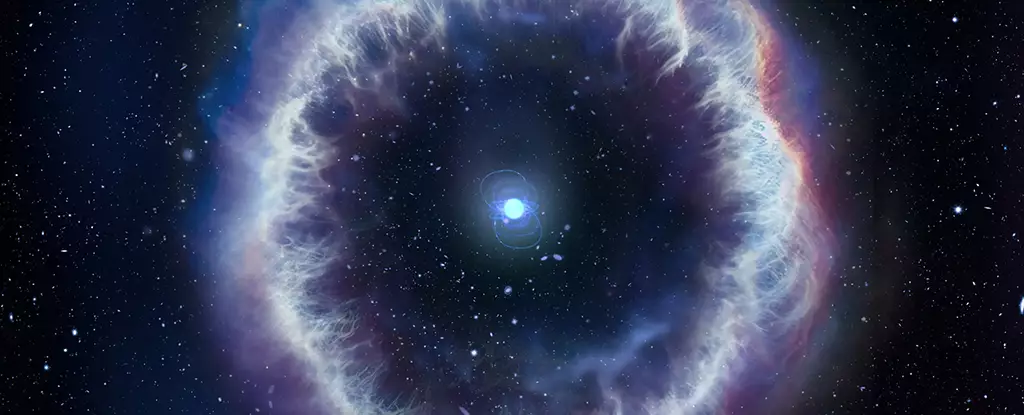Fast radio bursts (FRBs) have long captivated the attention of astrophysicists as sudden and intense blasts of radio wave energy from deep space. A recent study conducted by researchers from the Italian National Institute for Astrophysics (INAF) sheds new light on the origins of these mysterious phenomena. The study delved into FRB 20201124A, first identified in 2020, and specifically focused on a persistent radio source (PRS) near the FRB.
One of the key findings of the research was the detection of a persistent radio source (PRS) near the FRB, which was identified as emanating from a plasma bubble surrounding the source of the FRB. This plasma bubble, characterized as an ionized nebula, consists of electrically charged gas and dust. The data collected from radio observations using the Very Large Array (VLA) Radio Telescope in New Mexico suggested that the nebula may be associated with a young magnetar or a binary system featuring a neutron star or a black hole. These celestial phenomena could potentially generate the energy required to trigger the FRB signals observed.
The research not only provides valuable insights into the potential mechanisms behind the generation of FRBs but also offers a deeper understanding of the nature of these enigmatic cosmic events. By measuring the weak persistent emission from the same location as the FRB, the researchers were able to expand the range of radio flux explored for these objects significantly. The study suggests that other FRBs may be formed in different ways, emphasizing the complexity of these phenomena in the universe.
Further data collected from the Northern Extended Millimeter Array (NOEMA) and Gran Telescopio Canarias telescopes allowed the researchers to determine the amount of energy being released by the system at different wavelengths of light. This detailed analysis plays a crucial role in decoding signals emanating from over a billion light years away and offers a more comprehensive understanding of the mechanisms driving FRBs. The high-resolution data obtained from radio wavelengths with improved angular resolution was likened to viewing an object in 1080p resolution compared to 720p, highlighting the enhanced clarity and detail provided by the new observations.
Despite the significant progress made in unraveling the mystery of FRBs, there are still unanswered questions surrounding FRB 20201124A and similar cosmic phenomena. The study opens up new avenues for further research and exploration in astrophysics, paving the way for a deeper comprehension of the universe’s most captivating mysteries. As astrophysicists continue to probe the depths of space, each discovery brings us closer to unlocking the secrets of the cosmos and expanding our knowledge of the vast and wondrous universe we inhabit.


Leave a Reply